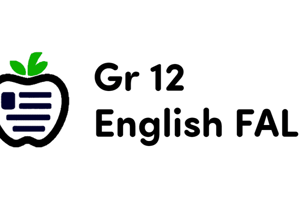Podcast
Questions and Answers
In what context should the auxiliary verb 'do' primarily be used?
In what context should the auxiliary verb 'do' primarily be used?
- With questions and negative statements. (correct)
- To form passive voice structures.
- Exclusively in past perfect tense.
- Only in affirmative sentences.
Which auxiliary verb is appropriate for forming the present perfect tense?
Which auxiliary verb is appropriate for forming the present perfect tense?
- Do
- Be
- Have (correct)
- Can
What is the correct short answer to the question 'Has she posted any photos yet?' if she indeed has?
What is the correct short answer to the question 'Has she posted any photos yet?' if she indeed has?
- Yes, she does.
- No, she hasn’t.
- Yes, she has. (correct)
- No, she didn’t.
Which auxiliary verb would appropriately complete the sentence: 'I _____ not going to the party tonight.'?
Which auxiliary verb would appropriately complete the sentence: 'I _____ not going to the party tonight.'?
In the past perfect tense, what is the correct form to convey that the action was completed before another action?
In the past perfect tense, what is the correct form to convey that the action was completed before another action?
Which of the following sentences uses the auxiliary verb 'be' in a passive construction?
Which of the following sentences uses the auxiliary verb 'be' in a passive construction?
How is the auxiliary verb 'be' used in progressive tense sentences?
How is the auxiliary verb 'be' used in progressive tense sentences?
Flashcards
Auxiliary Verbs
Auxiliary Verbs
Words that work with main verbs to form tenses and moods.
Common Auxiliary Verbs
Common Auxiliary Verbs
The most frequent auxiliary verbs are 'do', 'have', and 'be'.
Auxiliary Verb 'do'
Auxiliary Verb 'do'
Used in questions, negatives, and short answers.
Auxiliary Verb 'have'
Auxiliary Verb 'have'
Signup and view all the flashcards
Auxiliary Verb 'be'
Auxiliary Verb 'be'
Signup and view all the flashcards
Progressive Tenses Examples
Progressive Tenses Examples
Signup and view all the flashcards
Passive Tenses Examples
Passive Tenses Examples
Signup and view all the flashcards
Study Notes
Auxiliary Verbs
- Auxiliary verbs (helping verbs) work with main verbs.
- Common auxiliary verbs include do, have, and be.
Use of "do"
- Used in negative statements and questions.
- Used with affirmative and negative short answers.
- Examples:
- She doesn’t like social networking websites.
- Do you send lots of text messages? (Yes, I do. / No, I don’t.)
- Did Thomas answer your email? (Yes, he did. / No, he didn’t.)
Use of "have"
- Used with present perfect and past perfect tenses.
- Used in affirmative and negative statements, questions, and short answers.
- Examples:
- She has (not) created her own website.
- Has she posted any photos yet? (Yes, she has. / No, she hasn’t.)
- Have you charged your cell phone? (Yes, I have. / No, I haven’t.)
- I had gotten his email an hour before he called me.
Use of "be"
-
Used with progressive tenses (present, past, and future).
-
Used in affirmative and negative statements, questions, and short answers.
-
Examples:
- She is (not) answering her cell phone.
- Is your cell phone working? (Yes, it is. / No, it isn’t.)
- He was using his brother’s cell phone yesterday.
- Were you surfing the Internet last night? (Yes, I was. / No, I wasn’t.)
-
Used with passive voice (affirmative and negative).
-
Examples:
- The Internet is (not) used by millions of people.
- Were you given a password? (Yes, I was. / No, I wasn’t.)
Studying That Suits You
Use AI to generate personalized quizzes and flashcards to suit your learning preferences.




